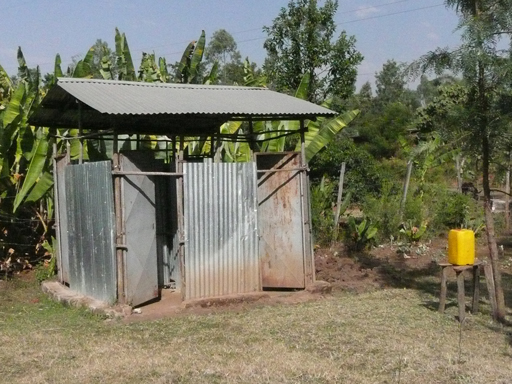8.3 Gathering information using a situation analysis
Situation analysis is, simply, finding out about a situation so you understand it. In the context of health behaviour assessment, it is a tool that helps to identify the various behavioural determinants that are facilitating or preventing progress in improving health, including improved hygiene and sanitation. The information that you gather will help to fill the spaces in your FOAM framework and to identify what you will need to overcome in order to bring about the desired change.
Using a situation analysis, you can also identify what has already been done to address hygiene and sanitation problems, what results were obtained and lessons learned. For example, you might find that people are using a local latrine that is well maintained and pleasant to use, and this could provide a model for building or upgrading other latrines in your area (Figure 8.7). You may also be able to find out who the main influential people are and who it might be important to get involved. In addition to ensuring that a particular intervention is appropriate to the local context, a situation analysis will also help avoid duplication of efforts.

You need to take four steps to conduct behavioural situation analysis and organise the information you require. These are explained in Box 8.1.
Box 8.1 Steps of behavioural situation analysis for FOAM
Step 1: Identify what information is already available
When capturing a situation to populate the FOAM framework, you should use headings and subheadings (see Figure 8.1) to guide your thinking. It is important to start by listing all your available information and information sources. This could be knowledge that you have gained by observation, information gathered from colleagues, research and published data from journals or government documents, etc. Often, a lot more information is available than you might first expect.
Step 2: Identify what information is still required
When the available information is identified, it will become apparent where the gaps exist. List your unanswered questions and start to think about what you will need in order to gather the responses. Do note that this should be realistic – if you wait until the situation analysis is ‘perfect’, it will never be finalised.
Step 3: Collect the required information
You might want to carry out some in-depth interviews with members of your target population and/or the influencers around them or you might need to find out information such as prices, availability of a product or other external determinants. One very thorough method of understanding your target population or group better is to conduct a barrier analysis. Barrier analysis is a process for identifying the behavioural determinants that prevent or discourage change, i.e. the barriers to change. The process involves dividing a group into doers (who already practise the desired behaviour) and non-doers (who do not). You then interview all participants asking about their behaviour and the reasons for it, and then compare the results from the two groups to identify the key differences between them (Kittle, 2013).
Step 4: Complete the FOAM framework
When the situation analysis is complete you should have all the information that you need in your FOAM framework and should have captured a good understanding of the behaviour that you want to change.
Note that you may also come across the term ‘KAP analysis’, which stands for knowledge, attitudes and practice. This is another approach to finding out about a situation. It relies on collecting data from community members using surveys and questionnaires.
8.2.4 Motivation determinants
